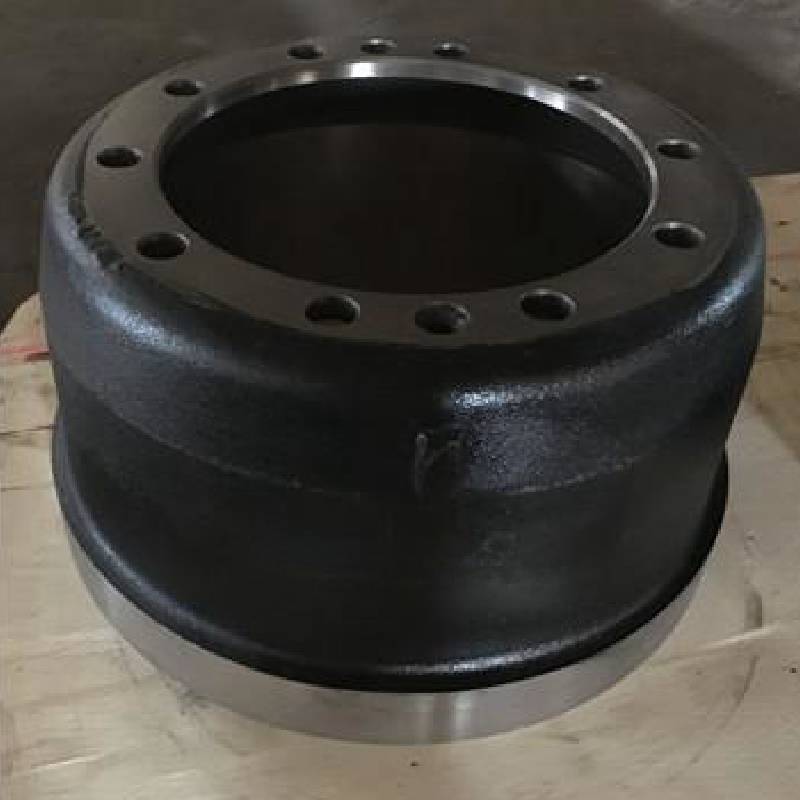okt . 17, 2024 08:13 Back to list
Examining Patterns of Wear in Brake Drum Performance and Longevity
Understanding Brake Drum Wear Patterns Causes, Effects, and Maintenance
Brake systems are one of the most crucial safety features in any vehicle, and understanding the wear patterns of brake drums is essential for effective vehicle maintenance and performance. Brake drums are typically found in older vehicles or in specific applications like trucks and buses. Unlike disc brakes, which are more common in modern cars, drum brakes operate using a different principle that can lead to distinct wear patterns. This article aims to explore the common wear patterns associated with brake drums, their causes, effects, and how to maintain them effectively.
The Basics of Brake Drum Function
Brake drums work by using friction to slow down or stop a vehicle. When the brake pedal is pressed, brake shoes are pushed outward against the inner surface of the brake drum. This friction generates the necessary force to reduce the vehicle's speed. Over time, the friction material wears away, leading to different wear patterns that can affect braking efficiency and safety.
Common Wear Patterns
1. Edge Wear One of the most prevalent wear patterns is edge wear, where the edges of the brake drum become more worn than the center. This pattern often results from misalignment of the brake shoes or uneven pressure distribution. As a consequence, the braking performance becomes inconsistent, often leading to grabbing or pulsing sensations during braking.
2. Grooving Another common pattern is grooving, where parallel grooves form along the surface of the drum. This wear is typically caused by debris, such as dirt or metallic particles, getting trapped between the brake shoes and the drum. Grooved drums can reduce braking efficiency and increase the risk of brake fade, where the brakes lose effectiveness due to heat buildup.
3. Scoring Scoring occurs when deep scratches appear on the drum surface, often due to contamination or using incorrect friction material. This can lead to uneven wear of the brake shoes as they cannot maintain proper contact with the drum. Scoring significantly affects braking performance and may necessitate drum replacement.
4. Heat Discoloration Overheated brakes can lead to heat discoloration on the drum surface, showing a bluish tint. This pattern indicates that the brakes have been subjected to excessive heat for prolonged periods, which can weaken the drum and cause it to warp. Warped drums can create vibrations during braking, affecting vehicle control and safety.
Causes of Brake Drum Wear
brake drum wear patterns

Several factors contribute to the wear patterns observed in brake drums. These include
- Brake Material Quality Poor quality friction materials can wear down quickly, leading to premature drum wear. - Driving Conditions Frequent stop-and-go traffic, hilly terrains, and heavy loads can put extra strain on the braking system, accelerating wear. - Improper Installation Incorrect installation of brake components, such as shoes or return springs, can lead to uneven pressure distribution and accelerate wear. - Lack of Maintenance Neglecting regular inspections and maintenance can result in built-up debris, moisture, or rust, further contributing to abnormal wear patterns.
Effects of Brake Drum Wear on Performance
The consequences of worn brake drums are significant. Reduced braking performance can lead to longer stopping distances and increased stopping time, posing a serious safety risk. Inconsistent braking can cause vehicle instability, particularly during emergency stops. Additionally, excessive wear can lead to costly repairs and replacements, emphasizing the importance of monitoring brake condition.
Maintenance and Prevention
Preventative maintenance can significantly extend the life of brake drums and enhance safety. Here are some key maintenance tips
- Regular Inspections Conduct regular inspections of the braking system to identify and address wear patterns early. - Quality Parts Use high-quality brake components and materials to ensure durability and performance. - Proper Installation Ensure that all brake parts are installed correctly to avoid misalignment and ensure even pressure distribution. - Keep It Clean Regularly clean the brake components to remove any dirt, moisture, or debris that can cause wear.
Conclusion
Understanding brake drum wear patterns is essential for maintaining vehicle safety and performance. By recognizing the signs of wear and taking proactive steps to address them, vehicle owners can prevent costly repairs and ensure their braking systems remain effective. A well-maintained brake system is not just about longevity; it’s about safety on the road.
-
HINO Industrial Solutions - ¡Ң���ຽ��е��������˾ | Advanced Efficiency&Customization
NewsJul.13,2025
-
HINO Industrial Efficiency Solutions - ¡Ң���ຽ��е��������˾
NewsJul.13,2025
-
HINO Industrial Solutions - ¡Ң���ຽ��е��������˾ | Advanced Technology&Reliability
NewsJul.13,2025
-
HINO Industrial Efficiency-Jiangsu Hino Industrial|Productivity Optimization&Cost Reduction
NewsJul.12,2025
-
HINO-¡Ң���ຽ��е��������˾|Advanced Industrial Solutions&Energy Efficiency
NewsJul.12,2025
-
Premium Brake Drum Iveco – Durable Drum Brake Drum & Brake Shoe Solutions
NewsJul.08,2025
